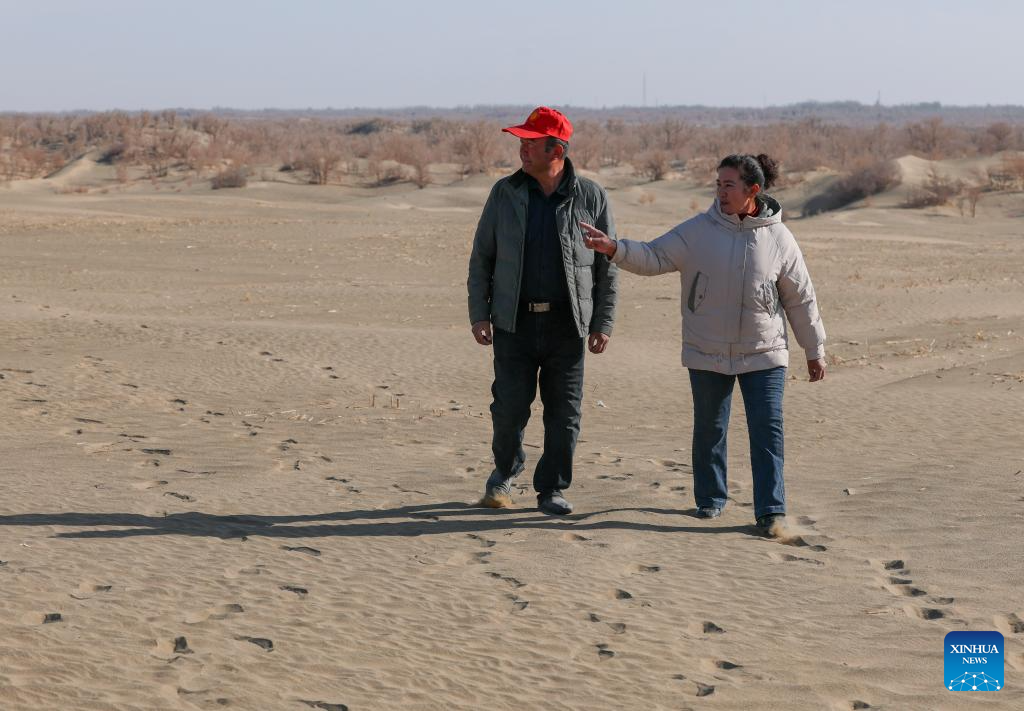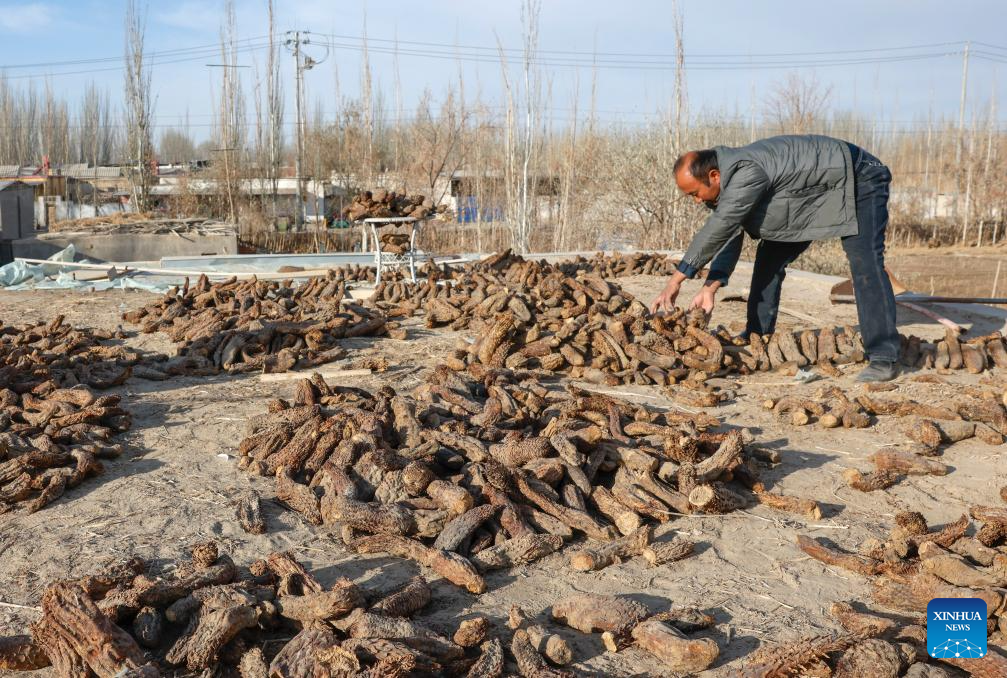


Memet Metseyit digs dried cistanche from the sandy land he contracted in Minfeng County, northwest China's Xinjiang Uygur Autonomous Region, Dec. 4, 2024.
For Memet Metseyit, a farmer and his family living on the southern edge of the Taklimakan Desert, known as the "Sea of Death," sandstorms were a constant menace.
The Taklimakan covers 337,600 square km and its circumference measures 3,046 km, making it the largest desert in China and the second-largest drifting desert in the world.
Since Xinjiang launched a desert control project and developed sand industries in the late 20th century, Memet has earned himself a good life by contracting sandy land for reclamation and planting red willow and cistanche, a traditional Chinese medicinal herb that grows in the desert .
In recent years, local authorities of Hotan Prefecture which administers Minfeng County have encouraged and guided various social forces to engage in sand prevention and control. As a result, 33 enterprises and 14 cooperatives have been introduced to help restore sandy land, along with 8,277 households contracting the land for reclamation and farming.
Thanks to decades-long efforts, the Taklimakan Desert has been completely encircled with a sand-blocking green belt stretching 3,046 km. (Xinhua/Wang Fei)

Memet Metseyit and his wife dig dried cistanche from the sandy land they contracted in Minfeng County, northwest China's Xinjiang Uygur Autonomous Region, Dec. 4, 2024. (Xinhua/Wang Fei)

Memet Metseyit and his wife inspect the sandy land they contracted in Minfeng County, northwest China's Xinjiang Uygur Autonomous Region, Dec. 4, 2024. (Xinhua/Wang Fei)

Memet Metseyit introduces home-grown cistanche to a purchaser in Pupuk Village of Minfeng County, northwest China's Xinjiang Uygur Autonomous Region, Dec. 4, 2024. (Xinhua/Wang Fei)

Memet Metseyit and his wife prepare lunch in Pupuk Village of Minfeng County, northwest China's Xinjiang Uygur Autonomous Region, Dec. 4, 2024. (Xinhua/Wang Fei)

Memet Metseyit drives a car to the sandy land he contracted in Minfeng County, northwest China's Xinjiang Uygur Autonomous Region, Dec. 4, 2024. (Xinhua/Wang Fei)

Memet Metseyit (R) talks with his family member at home in Pupuk Village of Minfeng County, northwest China's Xinjiang Uygur Autonomous Region, Dec. 4, 2024. (Xinhua/Wang Fei)

Memet Metseyit and his wife check drip irrigation hoses laid on the sandy land in Minfeng County, northwest China's Xinjiang Uygur Autonomous Region, Dec. 4, 2024. (Xinhua/Wang Fei)

Memet Metseyit checks drip irrigation hoses laid on the sandy land in Minfeng County, northwest China's Xinjiang Uygur Autonomous Region, Dec. 4, 2024. (Xinhua/Wang Fei)

Memet Metseyit arranges dried cistanche in Pupuk Village of Minfeng County, northwest China's Xinjiang Uygur Autonomous Region, Dec. 4, 2024. (Xinhua/Wang Fei)

Memet Metseyit arranges dried cistanche in Pupuk Village of Minfeng County, northwest China's Xinjiang Uygur Autonomous Region, Dec. 4, 2024. (Xinhua/Wang Fei)

Memet Metseyit (R) introduces home-grown cistanche to a purchaser in Pupuk Village of Minfeng County, northwest China's Xinjiang Uygur Autonomous Region, Dec. 4, 2024. (Xinhua/Wang Fei)

Memet Metseyit and his wife pick dried cistanche for sale in Pupuk Village of Minfeng County, northwest China's Xinjiang Uygur Autonomous Region, Dec. 4, 2024. (Xinhua/Wang Fei)
点击右上角![]() 微信好友
微信好友
 朋友圈
朋友圈

请使用浏览器分享功能进行分享
